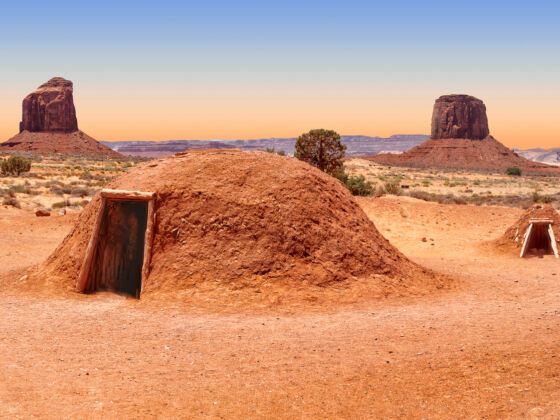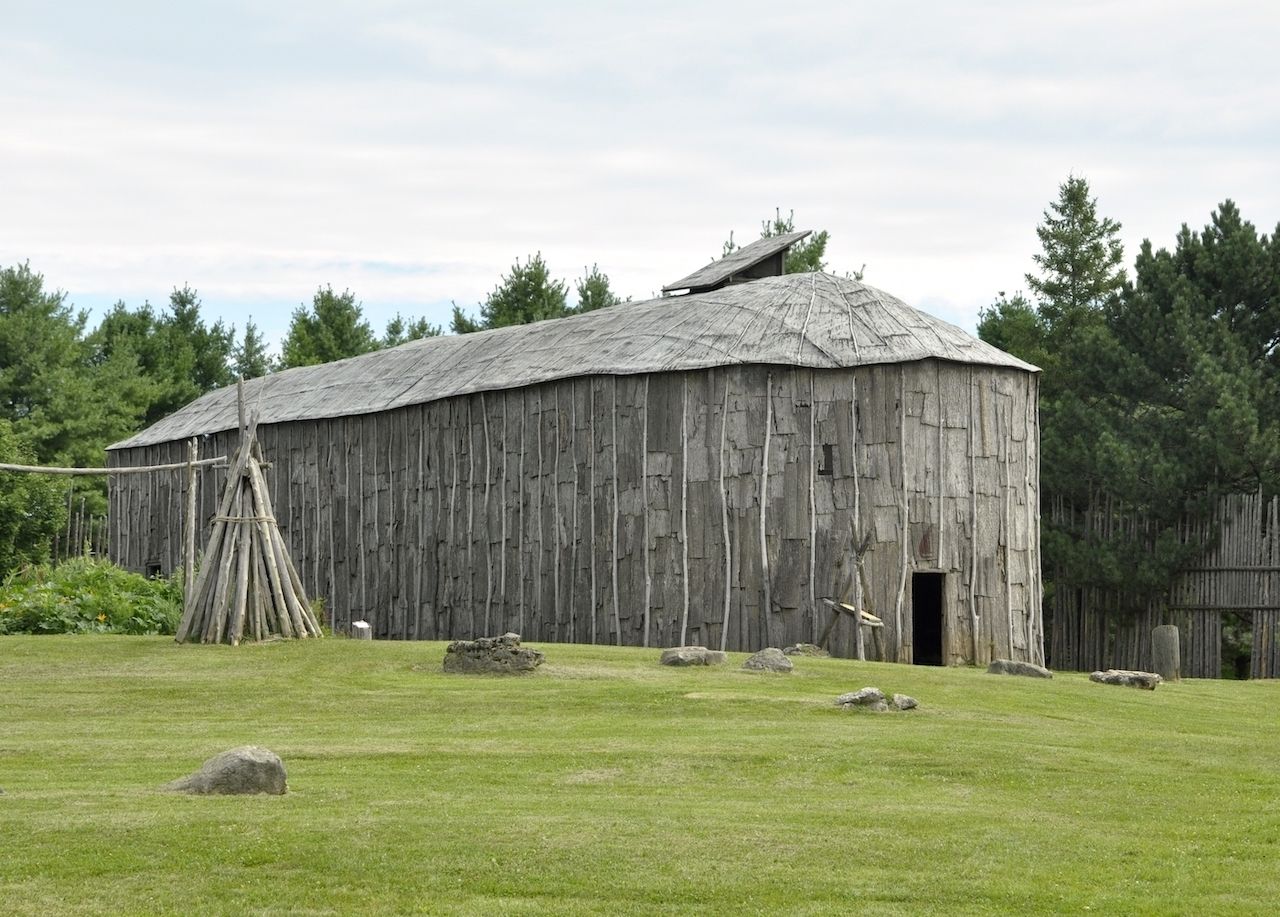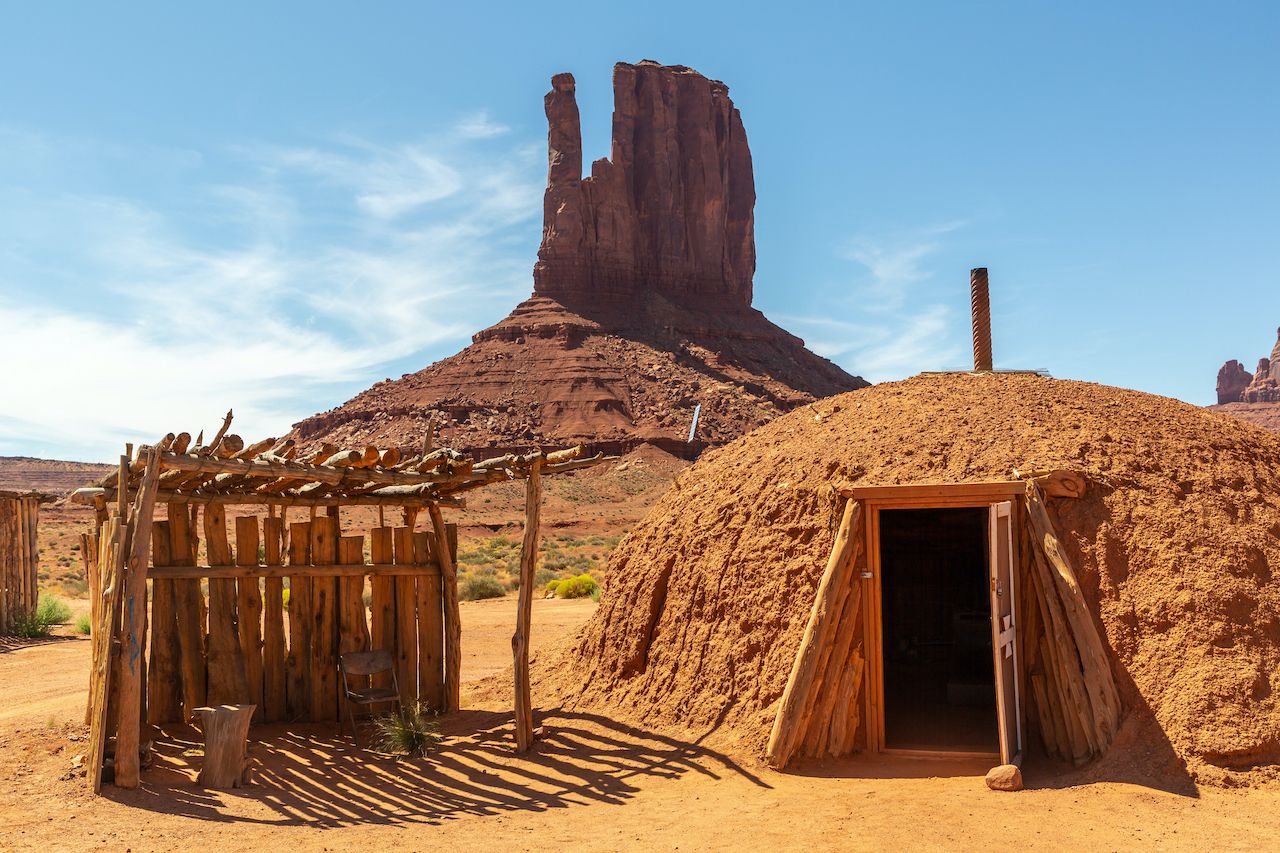Nowadays, home architecture from West Coast to East Coast is relatively uniform, and the aesthetic of our neighborhoods doesn’t change dramatically when you travel from Ohio to Nebraska. When Native Americans were the predominant residents of North America, however, that wasn’t the case. Each Nation adapted the architecture of its homes to the resources available, their lifestyle, and the climate, accommodating the scorching Arizona desert, the freezing temperatures of the great north, and everything in between. While these traditional dwellings are not typically used for actual residency today, many are still used for ceremonial and educational purposes. From Arctic igloos to the Algonquin wigwams, here’s a look at the diverse range of Indigenous dwellings in North America.

7 Traditional North American Indigenous Dwellings Made of Snow, Grass, and Adobe
1. Longhouses

Photo: SF photo/Shutterstock
Popular among Northeastern nations, particularly the Iroquois, longhouses were large, permanent houses designed to keep out the rain and wind. Built with pole frames and elm bark covering, they could be up to 200 feet long, 20 feet wide, and house 60 people, making them one of the largest Native American dwellings. Raised platforms inside the house sometimes created a second story, which was used as a sleeping space. Since they took a lot of time to build and furnish, they tended to be used by those planning on staying put for a while. That made them perfectly suited to the Iroquois, who were non-transient farmers often living in permanent villages.
2. Wigwams

Photo: Ralph Eshelman/Shutterstock
Small dome-shaped houses between eight and 10 feet tall, wigwams were primarily used by Algonquins in woodland areas. They were constructed with branches and lumber, with walls of stretched tree bark or wood. They only had one room but proved durable against the elements. Wigwams were relatively permanent residences, though they were easy to build, and families usually constructed new ones each year.
3. Hogans

Photo: S-F/Shutterstock
Hogans are the traditional homes of the Navajo in the American Southwest. Wooden poles form the frame, which then gets covered in mud and other earthen materials. It takes the shape of a dome with a door facing east toward the sunrise, and there is also a hole in the roof for fire smoke to escape. Hogans don’t usually have any windows or separate rooms, and they were large enough to accommodate a small family. Hogan architecture changed in the early 21st century to take hexagonal or octagonal shapes and now incorporate new notched-log or balloon-frame construction methods.
4. Teepees

Photo: Shannon Dunaway/Shutterstock
Teepees are tent-like houses mainly used by the people of the Plains Nations. Teepees are made with a cone-shaped wooden frame, covered with buffalo hide, and are easy to erect and deconstruct, making them extremely mobile. Mobility was a necessity for the people of the Plains Nations as they moved frequently to follow buffalo herds. In some cases, teepees were 24 feet tall in order to accommodate horses.
5. Adobes

Photo: Nick Fox/Shutterstock
The Pueblo people of the Southwest erected adobes because they’re made of a material that holds up well in the harsh, hot climate. Adobe is composed of clay and straw baked into bricks, and it creates a sturdy structure when cemented with large stones. Each home traditionally accommodates one family, though in the past, they were often interlinked together in dozens of units to house extended families. Very permanent homes, adobes have been known to last several generations.
6. Igloos

Photo: Belovodchenko Anton/Shutterstock
Used primarily by the Inuits of northern Canada, igloos are built from the snow with large blocks of ice set in a spiral pattern. Snow provides good insulation, and the ice blocks protect effectively against Arctic winds. Traditionally, a tunnel to the outside was partially built underground, so more warmth could stay inside the structure. Today, building igloos is unfortunately mostly a lost art, but some Inuit people are trying to pass down the necessary knowledge to younger generations for the cultural practice to thrive once again.
7. Grass houses

Photo: Texas Historical Commission/Facebook
Made by the people of the Caddo Nation in the southern plains, grass houses look like big wigwams but are made instead with switchgrass over a wooden frame. They resemble large beehives, sometimes more than 40 feet tall, covered in bundles of thatched grass. Despite how it might sound, grass houses are actually quite strong due to the rods, poles, and heavy thatching. Watch the construction process of a traditional grass house in this video by the Texas Historical Commission.